Product information

Kamon (Family Crest)
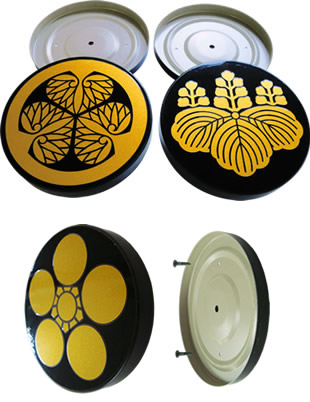
Product information
| Material | Galvalume Steel Sheet |
|---|---|
| Surface | PVC Marking Film
*Weather-resistant material which is often used for outdoor business signs |
| Dimensions |
60mm (2 3/8") Compatible with Morikuni FB-9in 90mm (3 9/16") Compatible with Morikuni FB-14in 145mm (5 11/16") |
| Designs | 12 home crests (See below) |
Designs
Tokugawa Aoi
(AA048)
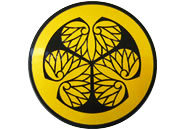
This is the crest of Tokugawa Shogun Clan which had virtual control of all Japan for about 300 years.
Kaga Umebachi
(UU157)
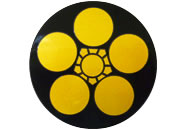
This design is stylized Ume (Japanese Plum) flower. This is the crest of Maeda clan, one of the most powerful daimyo.
Goshichi Kiri
(KI016)
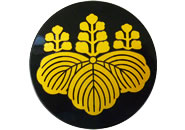
This crest is very old and for distinguished people such as Toyotomi Hideyoshi, one of the best known unifiers who brought an end to the Sengoku period.
Hidari Mitsutomoe
(TO008)
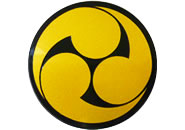
This is a Japanese sacred crest which is often seen at shrines and temples.
Kutsuwa
(KU044)
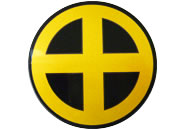
This design is a stylized curb chain. This is the crest of Shimazu clan, one of the well-known daimyo.
Sanada Sen
(SE025)
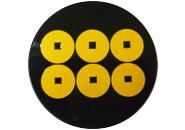
This crest consists of six stylized coins and was used by Sanada Yukimura, who was feared as `the man of courage` by Tokugawa Ieyasu, the first shogun of the Edo era.
Suwake Kaji
(KA188)
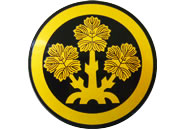
This design is made up of three stylized paper mulberry plants, which are thought to be sacred plants in Shinto.
Takeda Bishi
(HI096)
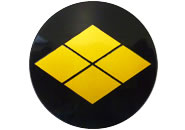
This is the crest of Takeda Shingen, who was a great samurai and called `Tiger` in the Sengoku era.
Goka Kara Bana
(KU001)
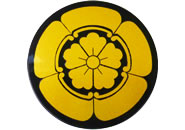
This crest is of Oda Nobunaga, the eccentric daimyo of the Sengoku era.
Maruni Kotobuki
(SI118)
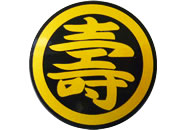
The design is from kanji, Kotobuki, which means happiness and longevity.
Maruni Sasarindo
(RI002)
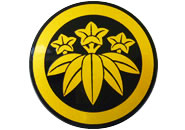
This crest is used by the Minamoto clan, who were leaders of samurai in the Heian era.
Mitsu Uroko
(UU136)
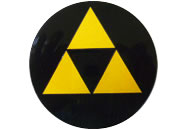
This design consists of stylized scales of snakes, which are considered to be mysterious in Japan.

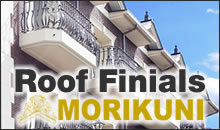
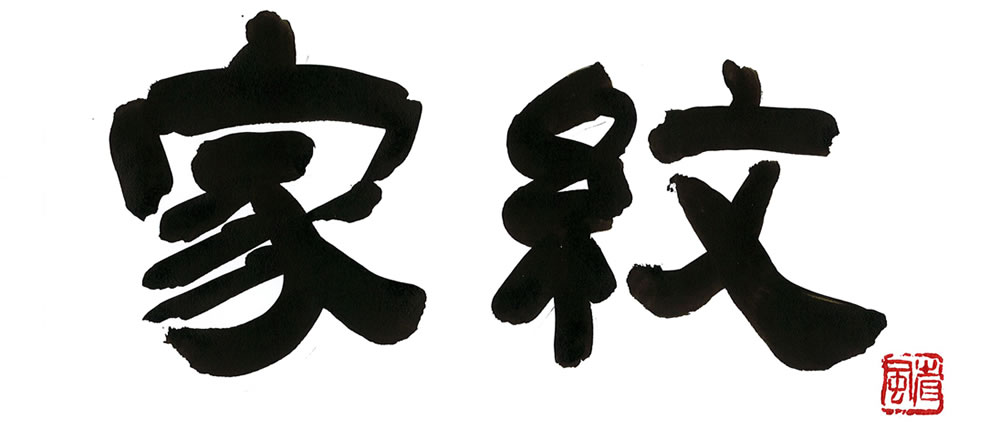

Kamon has been used to show the origin of your house, family tree and status from ancient times in Japan.
For example, you can attach it to your ceremonial robe or accessory, or you can place it inside or on the outside of your house as a symbol of your family.
You can see kamons at the family grave where all your ancestors
usually rest in peace and at temples. Corporations sometimes
use their family crest as their company’s emblem.
The phenomenon that even your average
family has a family crest only happens
in Japan, so we can say kamons are
unique to Japanese culture.
We believe that there are
more than 5,000 kamons in Japan today.